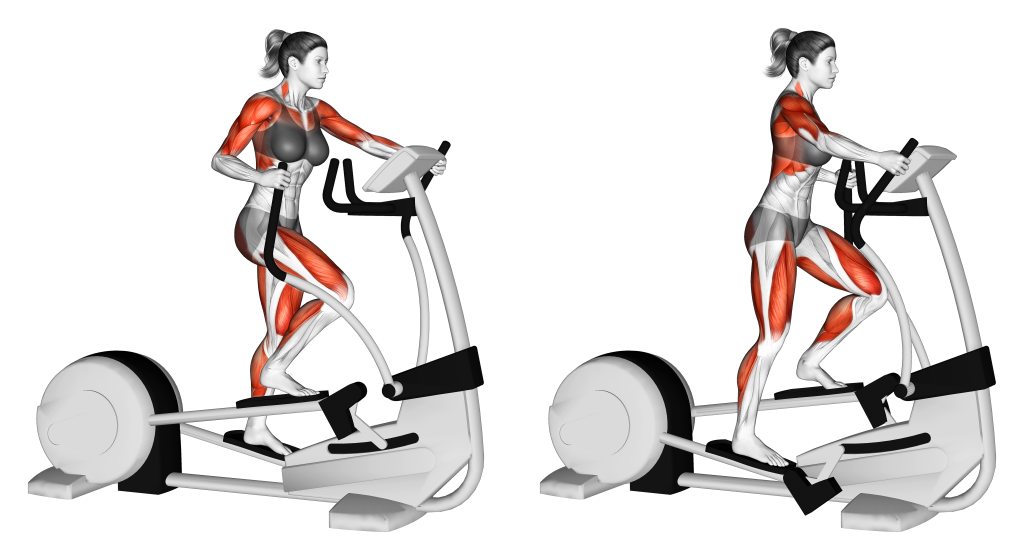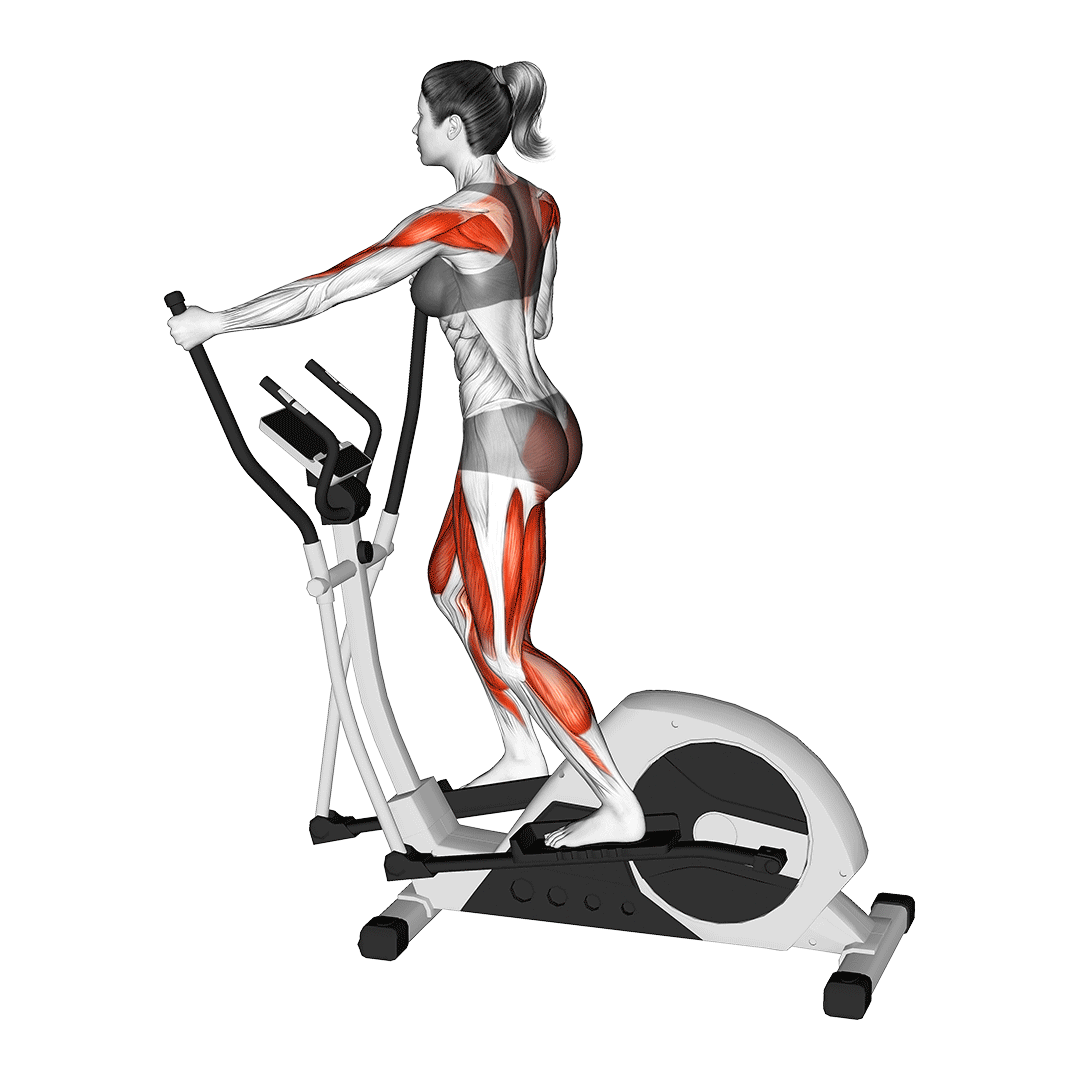Does the Elliptical Build Muscle? Here's Why Not.
When speaking specifically of whether the elliptical machine induces muscular hypertrophy - the answer is unfortunately a resounding no.
Though excellent for your health and joint integrity, the elliptical machine won’t be giving you shredded quads within any reasonable time frame.
Why the Elliptical is Ineffective for Building Muscle?
Within the context of exercise science, the term “training stimulus” refers to a stressor or type of environment that produces a specific response from an athlete’s body.

If we’re talking about the sort of training stimulus needed to build larger and stronger skeletal muscles, the current consensus is that significant amounts of resistance and high levels of intra-muscular tension in a lengthened state are key.
Based off these assumptions, it can safely be said that the elliptical is a truly poor movement for building any significant amount of muscle mass within a reasonable time frame.
Though it is still possible that entirely untrained individuals will build some tiny amount of muscle, the following reasons illustrate why anaerobic resistance training is a far superior choice over the elliptical.
1. Poor Range of Motion
First and foremost, muscles reportedly hypertrophy most readily when placed under tension as they are in a lengthened state.
Essentially, the more stretched out a muscle is while being worked, the better they respond to training.

In the case of the elliptical, the actual range of motion for all involved muscles is far too short to actually reach this lengthened state. This is simply due to the constraints of the machine and its inherent movement pattern, but nonetheless indicates that the elliptical is unlikely to result in muscle growth.
2. Lack of Eccentric Tension
More advanced trainees will note that the previous section mentions tension during a lengthened state - or what is known as eccentric contraction against resistance.

Tension during the eccentric or “negative” of an exercise is absolutely essential for building muscle mass and strength.
Unfortunately, most brands of elliptical machine do not produce any resistance of the sort, and solely require concentric contraction against resistance instead.
3. Insufficient Resistance
Even discounting the poor range of motion and lack of eccentric resistance involved, the elliptical machine itself is unlikely to be “heavy” enough to result in muscular growth.
The fact of the matter is that muscles need to be challenged in order to develop effectively - a challenge that comes as a result of significant loading and volume.
Even if the resistance of an elliptical machine is set to its maximum, it is unlikely to be sufficient enough to induce hypertrophy to any meaningful extent.
4. Anaerobically Inefficient
Finally, assuming that your elliptical machine is somehow built to ignore all the aforementioned limitations, aerobic fatigue will still be a major detracting factor.
Weightlifting, calisthenics and other established methods of muscle-building are all considered to be anaerobic exercises as they do not tax the aerobic pathways of the body. Essentially, they aren’t cardio.
Whether your training is aerobic or anaerobic is absolutely important, as aerobic fatigue can quickly limit the efficiency and force output of your muscles. In turn, this leads to a dampened training stimulus and poorer muscular growth as a result.
With elliptical training being most comparable to a moderate jog, it is likely that your aerobic metabolic systems will limit how far you’ll be able to push your muscles.
What Muscles are Worked by the Elliptical?
Suffice to say, the elliptical can be considered a full-body exercise as it works nearly every major muscle group throughout the entire body.
For the sake of understanding which muscles are likely to fatigue the fastest, we’ll have to divide these muscles according to their relevance to the elliptical’s movement pattern itself.
Primary and Secondary Mobilizer Muscles
The main muscles worked by the elliptical are the quadriceps femoris, the gluteal muscles and the hamstrings.
This contraction remains constant throughout the entire usage of the machine, as the legs are consistently moving in the same pattern regardless of whether pushing or pulling the handles.
For the upper body, as the handles are pushed forwards, it is the pectorals, triceps brachii and the anterior head of the deltoids that are used as mobilizers.
Likewise, when pulling the handles back towards yourself, it is the latissimus dorsi, biceps brachii and posterior deltoid head that act as primary mobilizers.
Stabilizers
Finally, apart from the aforementioned primary mobilizers, using an elliptical machine will also contract the core musculature to help stabilize the entire body.
In addition, the opposite muscles to the primary mobilizers (i.e. the back and biceps when pushing the handles) are used as fixator or antagonist stabilizer muscles for a brief period.
When is the Elliptical Machine Useful?
Though the elliptical machine is a poor muscle-builder, there are situations where it is indeed useful. Structure your training accordingly.
For Burning Calories
When it comes to torching fat and expending calories, long-term low-impact cardio is the way to go.
Alongside stationary bikes or swimming, the elliptical machine is perfect for burning a significant amount of calories without developing joint issues.
For Developing Endurance
Tolerance to lactic acid build-up and improving the efficiency of the cardiovascular system are two adaptations every individual should seek in their training.
The elliptical machine is perfect for building a baseline level of endurance in both respects - improving general systemic health and functionality.
As a Warm-Up or Cool-Off
Several minutes of light aerobic exercise can serve as both a pre-training warm-up or as a post-workout cool-off.
Elliptical training is particularly useful in either respect, as it is a full-body exercise that presents little to no impact or risk of injury to the body.
References
1. Prosser LA, Stanley CJ, Norman TL, Park HS, Damiano DL. Comparison of elliptical training, stationary cycling, treadmill walking and overground walking. Electromyographic patterns. Gait Posture. 2011 Feb;33(2):244-50. doi: 10.1016/j.gaitpost.2010.11.013. Epub 2011 Jan 6. PMID: 21215636; PMCID: PMC3299003.
